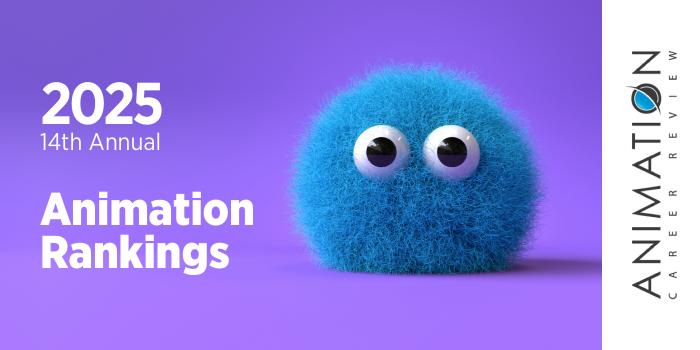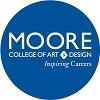Drexel University has one of the largest cooperative education programs in the U.S. allowing students to gain up to 18 months of work experience in their chosen field—all before graduation. Drexel University also houses one of the nation’s largest media arts and design colleges.
The Antoinette Westphal College of Media Arts and Design provides eighteen undergraduate majors, twenty-six undergraduate minors, and several STEM-designated and accelerated degree programs across the entertainment, visual art, media, design, and performing arts. In addition to the co-op program, which allows undergraduates to spend six months working full-time in the industry, students in all programs benefit from a studio-based curriculum; courses led by industry professionals; and access to state-of-the-art production facilities and studios.
Examples include the 1200 square feet Animation Capture and Effects Lab (ACE-Lab); computer labs outfitted with advanced graphics workstations; screening rooms; and the Immersive Research Lab for augmented reality, virtual reality, and immersive media projects.
The Antoinette Westphal College of Media Arts and Design at Drexel University (Drexel) has several paths to study animation including the Animation and VFX BS; the Digital Media MS; the Dual Animation and VFX BS/Digital Media MS; the Digital Media and Virtual Production BS/Digital Media MS; and the Digital Media PhD. An Animation and VFX minor are also available.
The curriculum for the eight-course, 24 credit-hour minor provides a foundation storytelling, design, and the technology used by 3D animators and VFX artists in the entertainment industry. Through 12 credit hours of electives, minor students may also customize the program. Elective examples include Digital Character Creation; Scripting for Animation and VFX; Technical Directing; and Lighting and Surfacing. Students can take the Animation and VFX minor alone or with just about any Westphal degree program.
The Dual BS/MS programs consist of coursework and projects in animation, interactivity, gaming, 3D modeling, and digital design. The programs also explore digital media history, theory, and methods. Westphal dual BS/MS students can also participate in three co-op experiences in the second, third, and fourth years of study. Positions may be paid or unpaid.
Past co-op positions include animation, technical direction, visual effects (VFX), and 3D production work at places such as Cartoon Network, Pixar, 3FX Medical Animations, Sony Studios, Ingenuity Studios, and FuseFX.
The Animation and VFX BS program provides instruction and hands-on training in 3D modeling, storyboarding, character design, rigging, scripting motion capture, and storytelling. Animation electives allow students to specialize in an area such as VFX, motion capture, character performance, or organic modeling. Course examples for the program include Digital compositing; Computer Programming; Scripting for Animation and Visual Effects; Character Animation; Experimental Animation Lab; History of Modern Design; Organic Modeling; Audio Production and Post; and Spatial Data Capture.
In addition to the co-op program, Animation and VFX BS students can participate in Westphal’s Drexel LA program. During this experience, students will spend an entire summer living and working in LA alongside students in the Screenwriting, Film and Television, and Playwriting programs. Drexel LA students have held internships at Riot Games, BBC Worldwide Productions, Nerdist, and ImageMovers.
The Westphal Drexel Animation and VFX BS program culminates with the Digital Media Senior Project. Students will create works in teams in a simulated real-world production environment. Final projects will be presented during a Thesis Exhibition attended by industry professionals.
The Digital Media MS at Drexel University is a STEM-designated, hybrid program that focuses on research and media applications. Areas explored include animation, gaming and digital media history, interactivity, advanced digital design, and 3D modeling. Course examples for the program include New Media: History, Theory and Methods; Designing for Interactivity; Animation and Game Design Bootcamp; Research Methods for Digital Media; and New Media Project.
Students in the MS program will complete several independent, industry-sponsored, student-created, or faculty-approved projects. Past projects have focused on areas such as animation design, advanced animation production techniques, video games, and narrative comics. This two-year program culminates with a thesis, oral presentation, and demonstration in the Department of Digital Media.
The Digital Media PhD program at Drexel University is a research-driven degree that take place in an experiential learning environment. PhD students may conduct research in entertainment, engineering, business, education, health, or other areas. Past projects have included advanced animation production techniques; theme park ride and animation design; interactive online non-linear narrative comics; multi-touch games for teaching middle-school children; Brain-Computer Interfaces (BCI) for video games; and a multimedia interactive dance performance with body tracking.
Graduates of the Animation/VFX and Digital Media programs at Drexel University are prepared to pursue advanced roles in the entertainment industry, game design and development, television production, advertising, and more. Program alumni have worked on projects such as The Mandalorian, How to Train Your Dragon 2, Ready Player One, and Avengers: Infinity War.
Graduates have also gone on to land positions in research and development in the fields of virtual reality, generative design, and real-time rendering solutions. Program alumni have been hired at places such as DreamWorks, Pixar, XBOX, Disney, NCSoft Corp, and Microsoft.
Drexel University was founded in 1891 by philanthropist and financier Anthony J. Drexel. Known as Drexel Institute of Art, Science and Industry, the school’s first graduating class was just 70 students. Today, Drexel University is an R1 Doctoral University that serves approximately 21,705 students enrolled in more than 200 degree programs across 15 colleges and schools.
Drexel University is accredited by the Middle States Commission on Higher Education (MSCHE). The school’s academic programs in art, design, and media are accredited by the National Association of Schools of Art & Design (NASAD).







